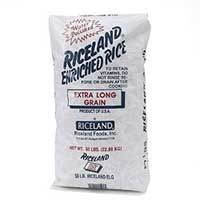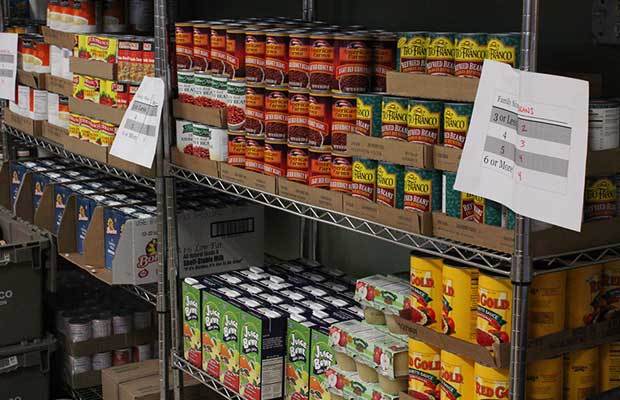Short Term Emergency Food Supply List
One of the biggest hurdles to actually doing something that can save your life is getting started. I know many people who research topics, watch movies, create lists and pages and pages of bookmarked websites that they can pull up at a moment’s notice. For every idea they have a source. For every plan, they have written information, sourced in binders with color coded tabs. This could be the same for you and your food supplies that are all written neatly in a binder or on a downloadable excel spreadsheet or parked on a DVD you bought online from a survival expert.
My question is what if the world as you know it ends tomorrow? What if the proverbial poop hits the fan and all your lists are just that; worthless words on pieces of paper. What if your highly organized blueprint for survival is nothing more than electrical impulses burned to a hard-drive that will never run again? What if in your efforts to be thorough, you didn’t actually do anything and now you family is looking to you for guidance? Since you have been talking about Prepping for 3 years, you have something prepared for this day, right?
I know that this isn’t the majority of people who read Final Prepper, but there are those out there that become overwhelmed by information and keep thinking over the details in their mind of what they want or need to do until it’s too late. We call this analysis paralysis and in the world of survival, this can get you killed. If you haven’t begun storing food for your family because you haven’t finished watching a DVD or your excel spreadsheet isn’t completely accurate with the quantities and current prices for all 1000 food items you need, you should try something else. What I want to give you is a simple food supply plan that can feed a family of 4 for a month, can be purchased in about one trip out and will cost you a few hundred dollars. Use this plan if you haven’t started anything yet or simply need a jump start on your emergency food supply list for your home. Trust me, your family will appreciate this if something terrible happens and you will be able to look them in the eye again.
What Foods to Buy?

Rice is a cheap and easy emergency food supply
Rice – Rice is one of my favorite storable foods because it is relatively easy to buy even in big quantities and I don’t know if I have ever met anyone who wouldn’t eat rice. Rice stores easily as long as you keep it cool and dry just in the bag. For longer storage you can seal your rice in Mylar bags, throw them in buckets and you are looking at years of shelf life. For your emergency needs though I would go to Sam’s or Costco and by a 50 lb. bag of rice or two. A 50 pound bag contains 504 servings of rice and will lay flat on your shelf for years. We use our rice though so it is always in rotation. Cost – Approximately $20
Beans – Beans, beans the magical fruit. Beans are another food that has a long storage life and is relatively cheap. Beans are the first part of Beans, Bullets and Band-Aids for a good reason. Beans don’t need too much care and like rice store easily for years. You can use them for a good source of fiber, but you should make plans to deal with excess gas if everyone is going to start eating beans once a day… A 10 lb. bag of beans costs around $7 and makes 126 servings. Buy several bags for your pantry and don’t forget the chili and soup mix.
Canned Meat – The best way to cheaply store meat is in cans and for a little variety and additional flavor for your meals, we stock up on canned tuna and chicken. Depending on the size you will need about 35 cans to cover your family for 30 days but these stack nicely and you can always work them into your weekly meals. Canned chicken will easily store for longer than a year so rotation shouldn’t be a problem.
Canned Veggies – 40 cans of your family’s favorite vegetables will give you the nutrition they need and something they will eat. Make sure you aren’t buying mushrooms or olives (unless your family loves them) if you don’t want to see turned up noses when the power has been out for a week and you are trying to get creative with dinner. 40 cans of vegetables will cost roughly $40 and like the meat will store for years.
Canned Fruit – Some people purchase other items for dessert, but canned fruit has a long shelf life and I have to recommend this for your sweet tooth over most other things outside of fresh fruit. I purchased 5 big #10 cans of pears, peaches, and mixed fruit. Each has about 25 servings and will be a nice addition to the rice, bean and chicken stew… 5 cans will cost around $25.
Oatmeal – Breakfast is served, unless that is you are raising chickens and already have fresh eggs everyday which I also highly recommend if you have the ability to do so. Oatmeal is great for breakfast cereal, its cheap and will store a pretty long time. Oatmeal needs a little more care than your rice or beans, but if you have this stored in Mylar you would have breakfast for years. The old cardboard tubes of Oatmeal has 30 servings, costs about $2 each. Buy 4 and you only need water to make this edible. Unless you have the next item.
Honey – Honey as you probably know has been called the perfect survival food. This is because it has an infinite shelf life. That isn’t something we usually have to worry about though because it gets used as a sweetener to replace sugar in tea, over that oatmeal above and you can even use honey to treat wounds. The normal 5 lb. jar of honey is about $15 right now and has 108 servings. Buy two of these.
Salt/Seasoning – Salt is another good storage item because if you keep it dry it will also last forever. Salt is needed by your body and in my opinion; it makes almost everything taste better. You can buy a case of salt in 4 lb. boxes for about $12. Buy a case and you will have enough for a year of seasoning. You can also purchase pepper and other spices you normally use to make that soup or chili above taste better.
Vitamins – The experts say vitamins don’t help you but I tend to believe that some nutrients even in vitamin form are better than nothing. If you aren’t able to maintain perfect nutrition, a simple multivitamin could keep you healthier than not. If you have kids get them some chewable gummy vitamins to keep their health up too. A bottle for each of you would cost about $8.
Water – I know this list was about emergency food supplies, but I will throw water in here too because if you are going to the trouble of taking care of food, you should knock out water at the same time. Each person needs about 1 gallon per day (assuming you aren’t working in the heat all day) for normal hydration and hygiene. A family of 4 would need 120 gallons of water to live for 30 days so you can either buy a whole bunch of bottled water or get 5 gallon plastic water storage containers. If you have the space, a fifty gallon water barrel would be easier, but you won’t be able to move that once it is in place.
What Next?
If you purchase all of the food supplies above it will set you back around $500 buy will cover your family as far as food and water for 30 days. Is this enough to weather any disaster? No, but it is that start you were looking for and you can really knock out all of these items in one day. One day of shopping and storing water would give you the peace of mind you need to ensure your family is taken care of. Can you go out and buy a 30 day supply of freeze-dried food just as easily? Maybe but the key is to do something now. Act before you need this food and take care of your family.
Next steps would be to work on medical supplies, and security. Once you have those, there is also other lists of prepper supplies you should consider. If you want to read a more comprehensive plan, you can also check out our Prepping 101 – Step by Step plan for How to get started Prepping.
One of the biggest hurdles to actually doing something that can save your life is getting started. I know many people who research topics, watch movies, create lists and pages

